Interior Arrangement with Red Hills 1957
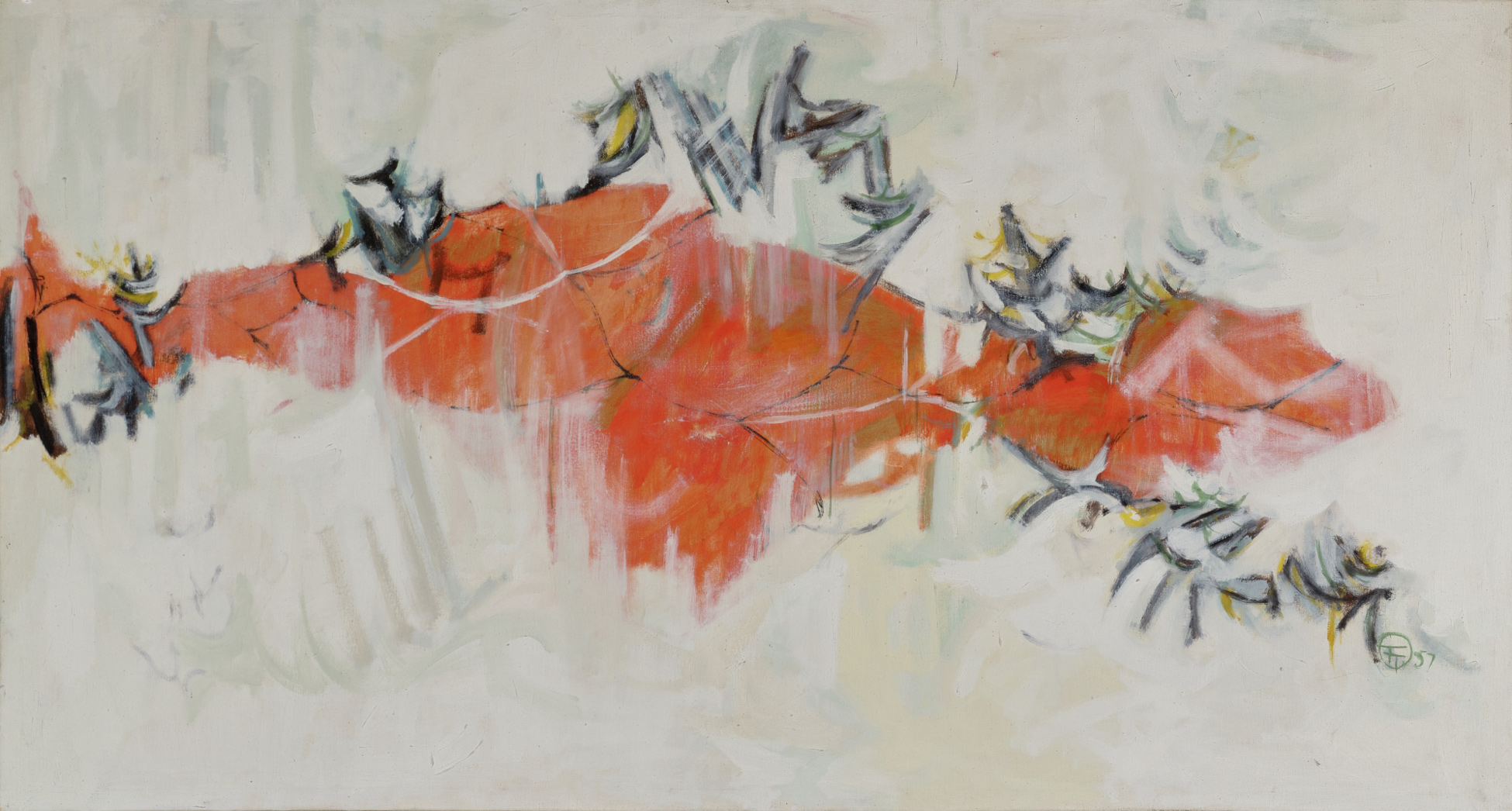
Takao Tanabe, Interior Arrangement with Red Hills, 1957
Oil on canvas, 68 x 126.5 cm
National Gallery of Canada, Ottawa
The vibrant and powerful Interior Arrangement with Red Hills reads as both a landscape and an abstract composition, beguiling the eye and the mind of the beholder. The work is lyrical, expressive abstraction that references our ideas of landscape. Even the title toys with our perceptions: how does an “interior arrangement” come together with “red hills”? There is both spatial depth and flatness, calligraphic elements (in the repeating black lines) and smooth areas of colour. The red hills are not depicted, but conjured out of the shapes that Tanabe has applied to the canvas. In this early work, Tanabe bridges two artistic traditions, demonstrating that he had already found a creative path of his own.
Following his training in Winnipeg, New York, and London, and his travels throughout Europe between 1953 and 1955, Tanabe’s artistic allegiances were divided. Although he viewed himself as an abstract painter, he also found himself drawn to landscape painting. He chose to explore the landscape of rural Denmark in a series of watercolours, although his depictions were rarely explicit. However, when discussing the artist’s more abstract work from the early 1950s, the Irish painter William Scott (1913–1989), who met Tanabe in Banff, did refer to his paintings as “landscapes.”
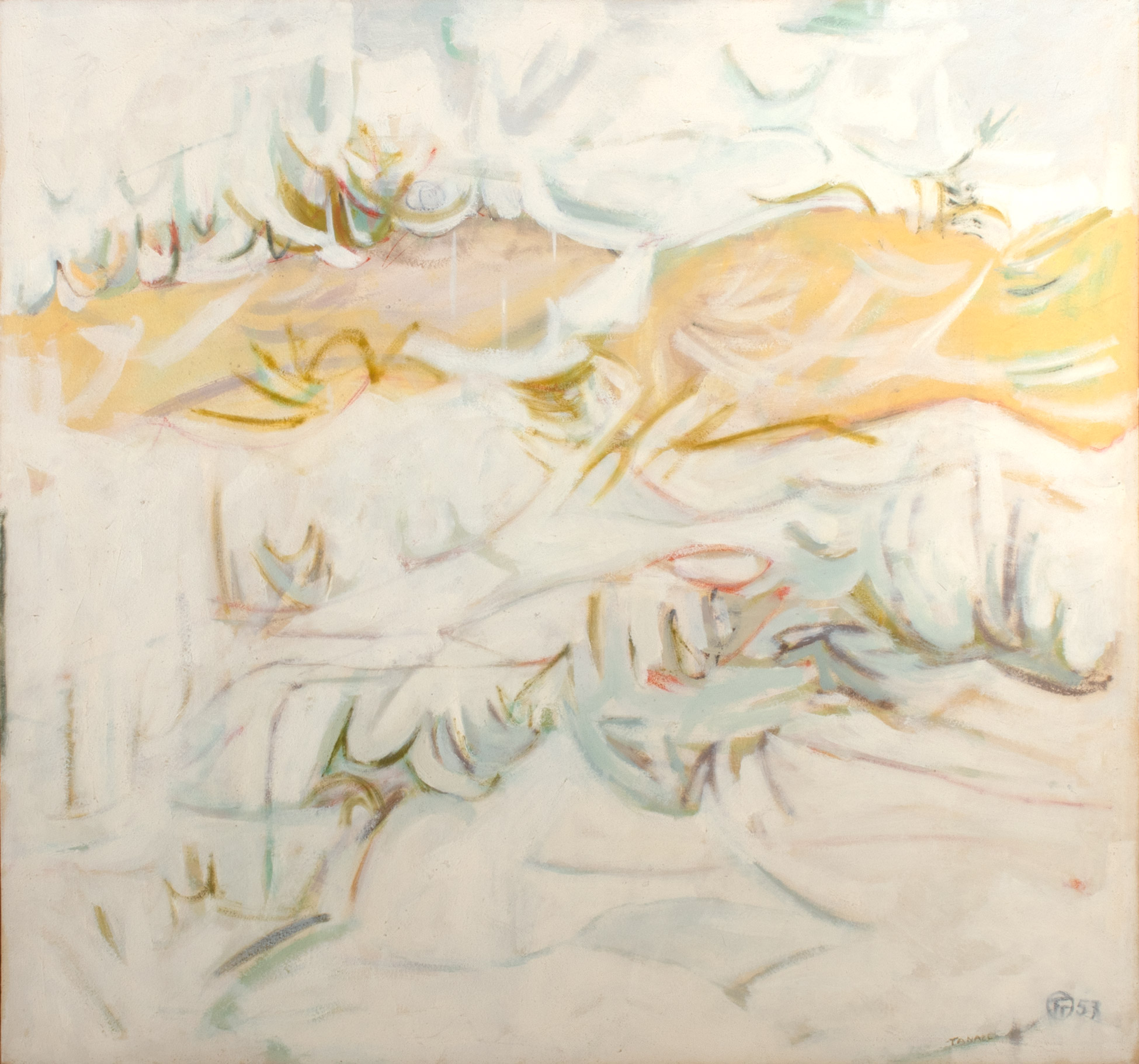
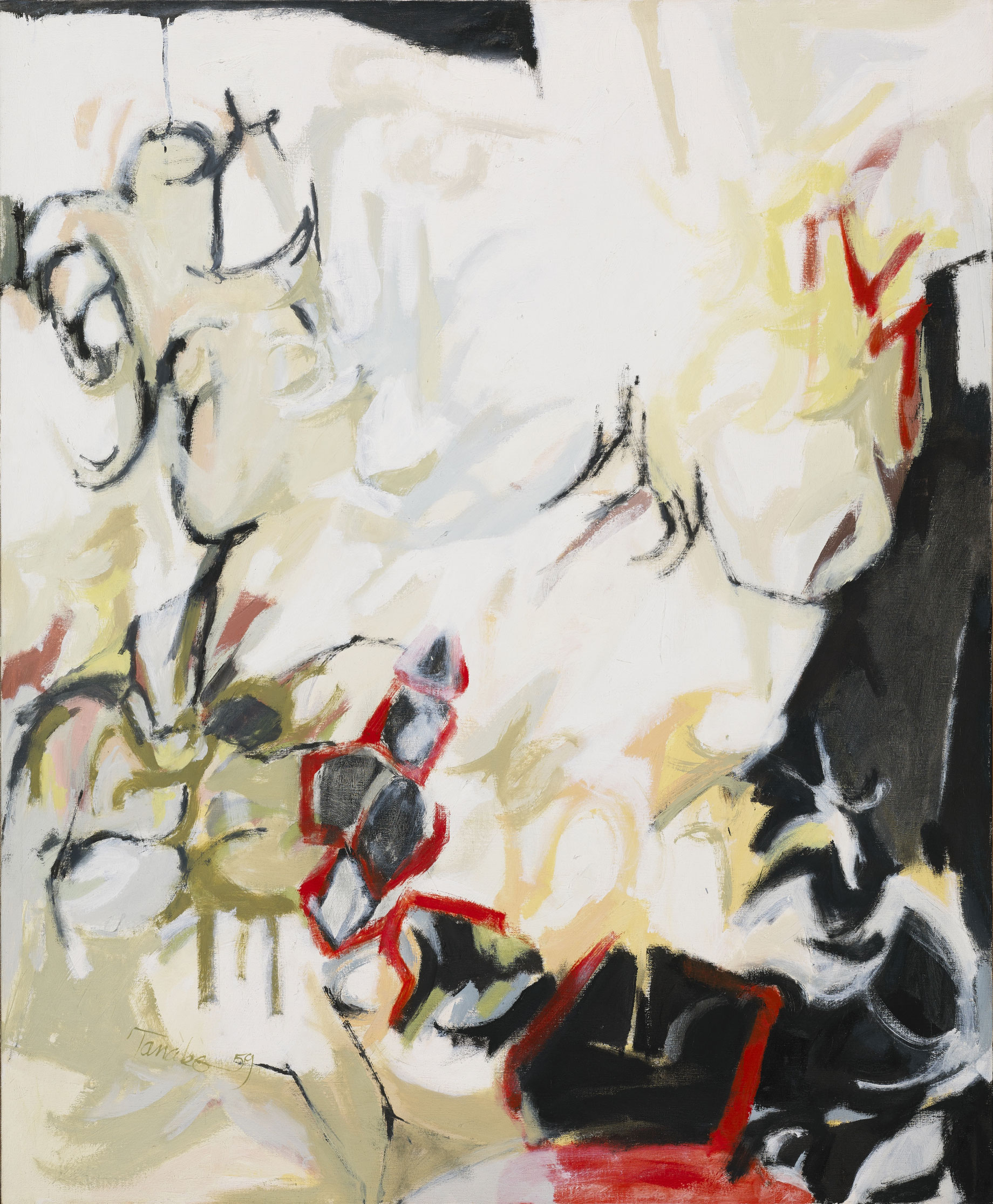
In 1957, the year he painted this composition, Tanabe had a large exhibition at the Vancouver Art Gallery. Although Interior Arrangement with Red Hills cannot be definitively placed in this group of works, it surely belongs to a series that Tanabe’s friend and mentor Joseph (Joe) Plaskett (1928–2014) called “The White Paintings,” which includes the work A Region of Hills, 1957. As Plaskett wrote:
Why all this white? You may think it is snow, or just light. The artist had no such intention. He describes his use of white as a “cleaning up.” In reaction against full and opaque colour he began using white sparingly and thinly, playing it off against the white of the canvas and producing this lightness of touch and technique. The effect of sparkling light is a by-product. Yet you, the viewer, are right. The artist’s intentions never count. The white paint turns into light, and light is the secret of landscape, indeed of all painting. What counts is the expression, not the means. These luminous nuances of colour, this impeccability of craftsmanship, this daring and dazzling composition produce a lyrical expression…
These works “came out of the free play of the brush, the calligraphy that had been Tanabe’s abstract style,” he said. Crucially, Plaskett also explained, “they often began non-figuratively and were seen as landscapes after the fact.” In early paintings such as this one, Tanabe was seeking an innovative way to adapt the forms of Abstract Expressionism to his strong and evolving interest in landscape.
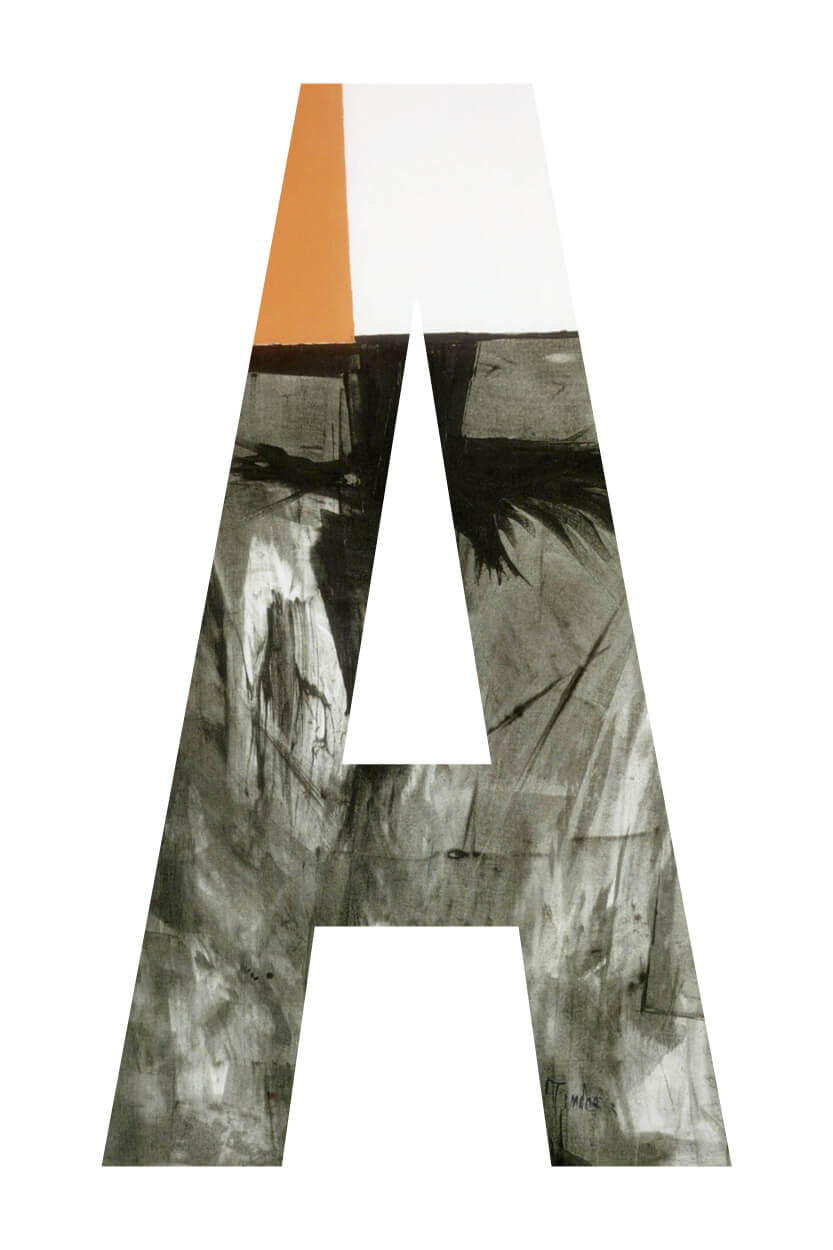
 About the Author
About the Author
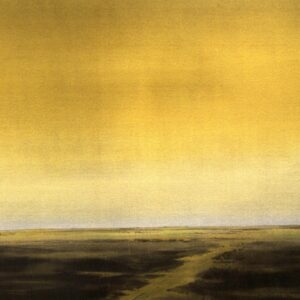 More Online Art Books
More Online Art Books
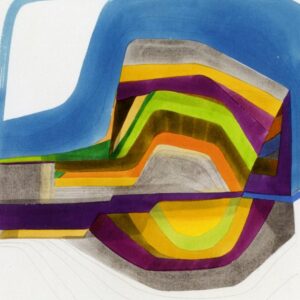 Acknowledgements
Acknowledgements